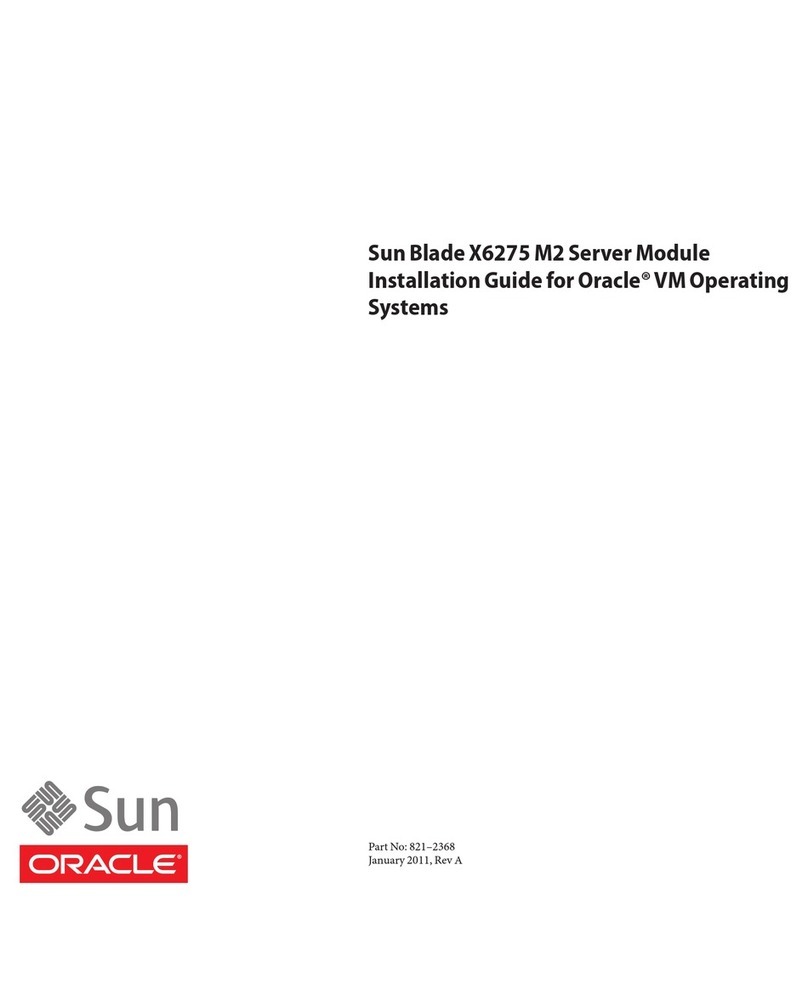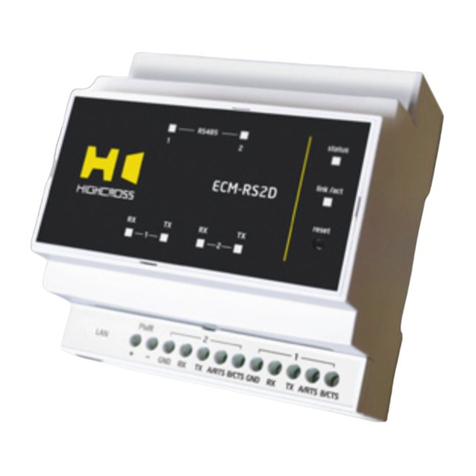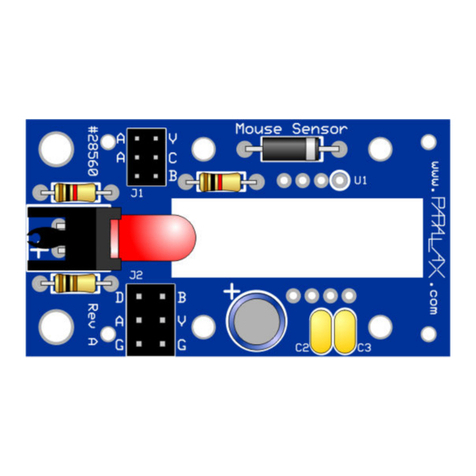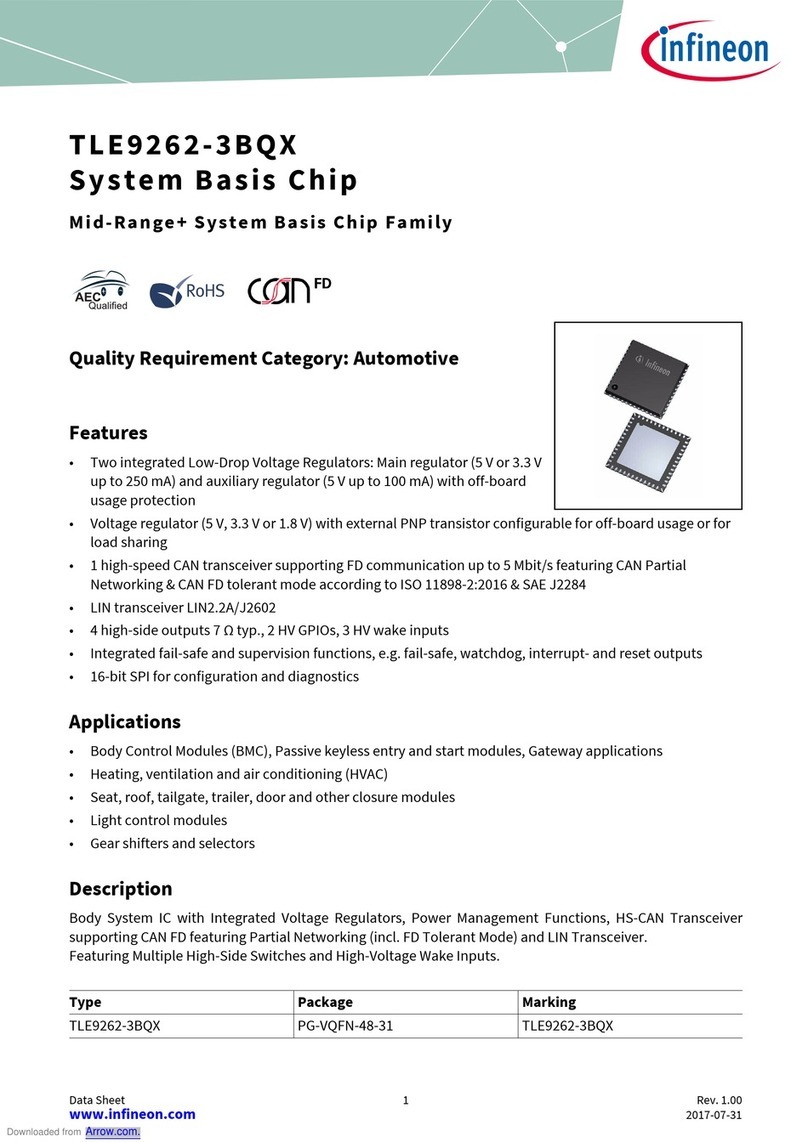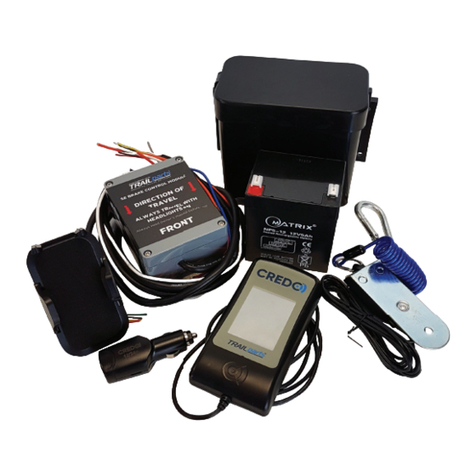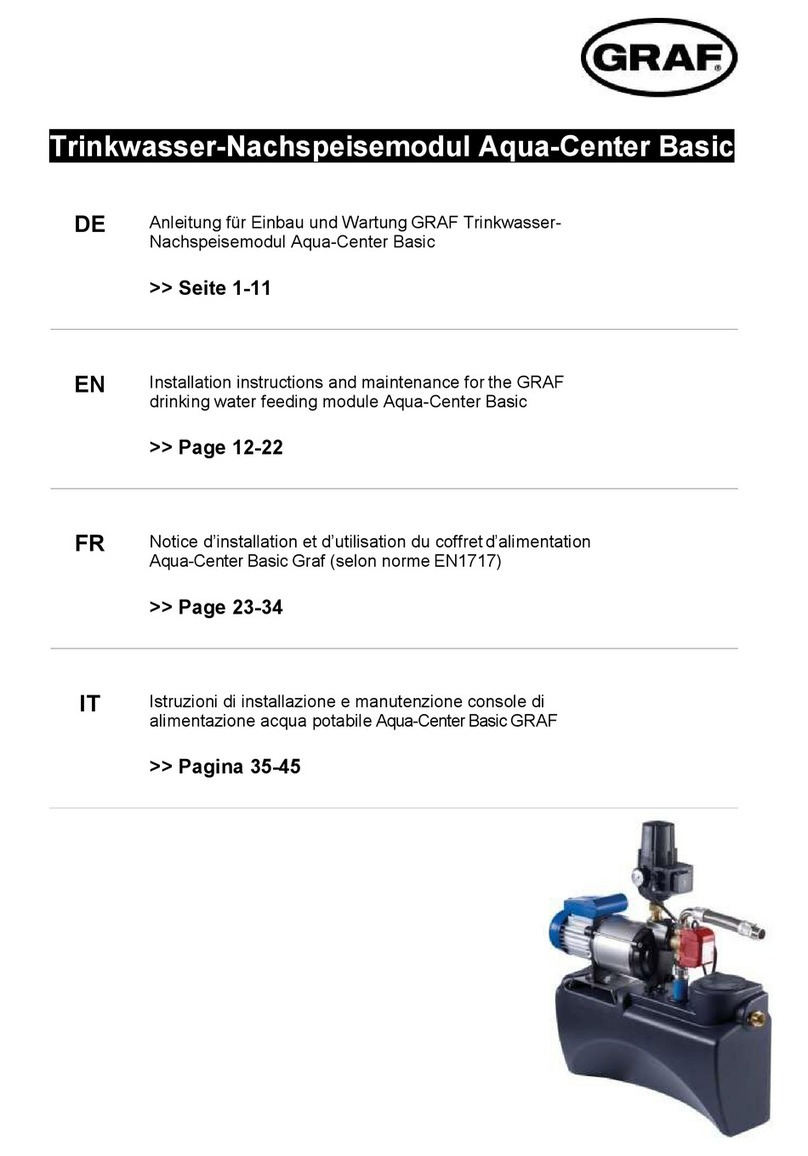Sendum PT300D User manual

Doc. # DPB00006 1
Device Operating Manual
PT300D with SP300
Introduction
The PT300D (in combination with the SP300
Sensor Pack) monitors and reports real-time
location and sensor data.
The device is powered by a long-life lithium-ion
battery and has been designed for worldwide
operation. Sensors include temperature, relative
humidity, pressure, motion, shock, vibration,
orientation, light, and battery level.
What’s in this Guide
Introduction ............................1
What’s in the Box........................... 1
Diagram ................................. 2
Connecting the Modules ..................... 2
Battery Tips ............................3
Safety, Care, and Handling ...............3
Product Contains a Lithium Battery.............. 4
Disposal and Recycling....................... 4
Operating Environment ...................... 4
LED Light Indications.....................4
FCC Compliance .........................5
What’s in the Box
AC Adapter Cable AC Adapter
Sensor Pack SP300
PT300D Command
Module
All of these components should be in your
original PT300D product package.

Doc. # DPB00006 2
Device Operating Manual
PT300D with SP300
Diagram
B
C
B
C
D
J
C
C
E
G
H
I
F
A
End View
F
A PT300D Command Module F Atmospheric Vents for Sensors
B Module Release Buttons (2) G Network LED
C Light Detectors
(Ambient, Infrared)
H Battery LED
D SP300 Sensor Pack I Charger LED
E Status Button
(Touch-Sensitive)
J Mini-USB Connector
The SP300 Sensor Pack contains the
battery used to power the PT300D.
Connecting the Modules
The PT300D Command Module and SP300
Sensor Pack are designed to work together.
To connect them, simply slide the Sensor Pack
into the PT300D Command Module using the
guiding tabs until you hear a confirming “Click”
sound.
To remove the Command Module, squeeze the
two tabs on the side of the device, then pull the
module out of the Sensor Pack.

Doc. # DPB00006 3
Device Operating Manual
PT300D with SP300
In order to use your PT300D, you’ll need to
have the battery in your Sensor Pack fully
charged. To do this, simply plug the supplied AC
Adapter and cable into any standard electrical
receptacle. A full charge can take up to nine
hours.
SP300 Sensor
Pack
AC Adapter
Battery Tips
The Sensor Pack contains the PT300D battery.
Battery life depends on such factors as the
network, signal strength, temperature,
configuration, and the accessories you use.
a. Always use Sendum original batteries and
battery chargers. The warranty does not
cover damage caused by non-Sendum
batteries or chargers.
b. New batteries or batteries stored for a long
time may take more time to charge.
c. When charging your battery, keep it near
room temperature.
d. When storing your battery, keep it
uncharged in a cool, dark, dry place, such
as a refrigerator.
e. Never expose batteries to temperatures
below -20°C or above 65°C.
f. It is normal for batteries to lose capacity
over time. If you notice a change in your
battery life, it is probably time to purchase
a new battery.
Never dispose of batteries in a fire
because they may explode.
Before using your device, please read the
battery safety information in the “Safety, Care,
and Handling” section.
Safety, Care, and Handling
a. This device contains sensitive electronic
components.
b. Do not puncture or crush.
c. Do not drop or expose to violent impact or
shock. This can cause mechanical damage.
d. Do not place in contact with liquids.
e. Do not store or transport flammable liquids,
gases, or explosive materials in the same
compartment as your PT300D or any of its
accessories.
f. Never attempt to disassemble. If service or
repair is required, return the device to an
authorized Sendum service center.
g. Do not incinerate. Never attempt to dispose
of your device by throwing it into a fire.
h. Only charge with charger purchased with
device. Use of incompatible equipment could
result in fire, electric shock, or bodily injury.
i. Do not charge in moist environments or if
the charger cables are damaged.
j. Do not subject product to prolonged heat
or high temperatures. This can cause heat
damage to the plastic components, the
electronic components, and the battery.
k. Never use harsh chemicals, cleaning
solvents, or strong detergents to clean your
device.

Sendum Wireless Corporation
4500 Beedie Street, Burnaby, BC V5J 5L2
www.sendum.com
Doc. # DPB00006 4
Device Operating Manual
PT300D with SP300
Product Contains a Lithium Battery
The lithium-ion battery used in the PT300D
is in compliance with IATA Dangerous Goods
Regulations, Packing Instruction 967.
Disposal and Recycling
Regulations and laws about disposal of
products with lithium-ion batteries vary from
country to country as well as by state and local
governments. Please check local laws and
regulations before disposing of the PT300D or
contact your local recycling center.
Operating Environment
a. For active use, the PT300D is rated for
-20° C to +65° C / -4° F to +140° F and
<95% RH (non-condensing).
b. Do not charge battery below 0° C (32° F).
LED Light Indications
LED Status Description
Network
Green Device in carrier coverage
area
Green
(Blinking)
Device in Aircraft Mode
Red Device out of carrier
coverage area
Red
(Blinking)
Device in No Coverage
Mode. Note that the device
will automatically go into
No Coverage Mode if it is
out of coverage for a period
of time.
Battery
Green Battery charge level near
full (80%+)
Red Battery needs recharging
Red
(Blinking)
Battery charge level good
(approximately 20-80%)
Charger Red Battery is charging
Green Battery charging is complete
The Network and Battery LEDs only
display status under the following two
conditions: 1) initially when the device
is powered up, and 2) after the Status
button is pressed.

Sendum Wireless Corporation
4500 Beedie Street, Burnaby, BC V5J 5L2
www.sendum.com
Doc. # DPB00006 5
Device Operating Manual
PT300D with SP300
FCC Compliance
Nearly every electronic device is
susceptible to RF energy interference
from external sources if inadequately
shielded, designed, or otherwise
configured.
This product complies with Part 15 Class B of the
FCC Rules. Operation is subject to the following two
conditions:
1. This device may not cause harmful interference, and
2. this device must accept any interference received,
including interference that may cause undesired
operation.
This device contains the following FCC IDs:
1. XMR201906EG21G
2. XPYANNAB1
3. XPYNINAW13
This device contains the following IC IDs:
1. 8595A-ANNAB1
2. 8595A-NINAW13
3. 10224A-201906EG21G
Sendum (the “Grantee”) is not
responsible for any changes or
modifications not expressly approved
by Sendum for compliance. Such
modifications could void the user’s
authority to operate the equipment.
NOTE: This equipment has been tested and found
to comply with the limits for a Class B digital device,
pursuant to Part 15 of the FCC Rules. These limits are
designed to provide reasonable protection against
harmful interference in a residential installation. This
equipment generates, uses and can radiate radio
frequency energy and, if not installed and used in
accordance with the instructions, may cause harmful
interference to radio communications. However, there
is no guarantee that interference will not occur in a
particular installation. If this equipment does cause
harmful interference to radio or television reception,
which can be determined by turning the equipment
off and on, the user is encouraged to try to correct the
interference by one or more of the following measures:
• Reorient or relocate the receiving antenna.
• Increase the separation between the equipment and
receiver.
• Connect the equipment into an outlet on a
circuit different from that to which the receiver is
connected.
• Consult the dealer or an experienced radio/TV
technician for help
This device complies with Industry Canada’s license-
exempt RSSs. Operation is subject to the following two
conditions:
1. This device may not cause interference; and
2. This device must accept any interference, including
interference that may cause undesired operation of
the device.
Le présent appareil est conforme aux CNR d’Industrie
Canada applicables aux appareils radio exempts de
license. L’exploitation est autorisée aux deux conditions
suivantes:
1. l’appareil ne doit pas produire de brouillage, et
2. l’utilisateur de l’appareil doit accepter tout
brouillage radioélectrique subi, même si le
brouillage est susceptible d’en compromettre le
fonctionnement.
This manual suits for next models
1
Table of contents
Popular Control Unit manuals by other brands
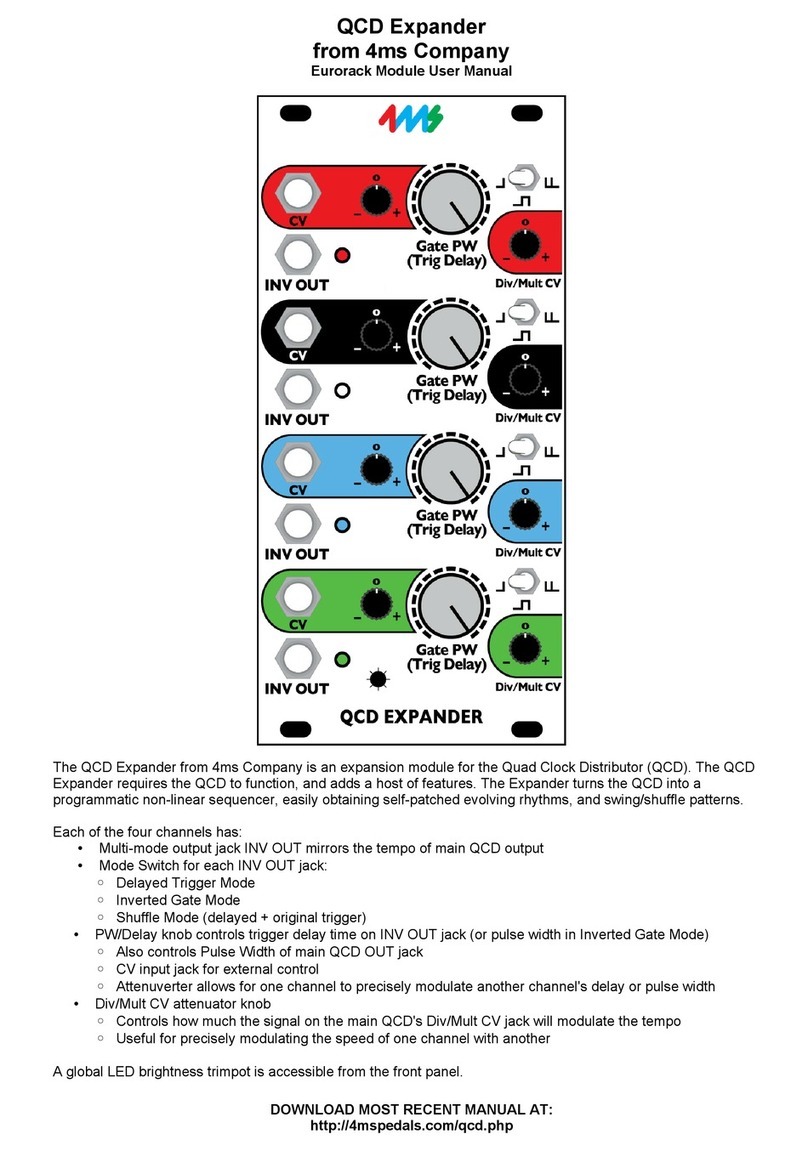
4ms Company
4ms Company QCD Expander user manual
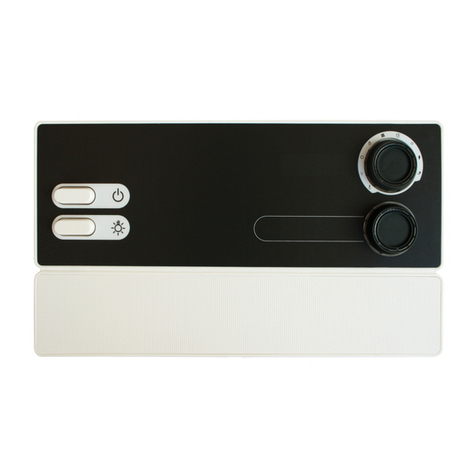
Sentiotec
Sentiotec Pro C3 Instructions for installation and use
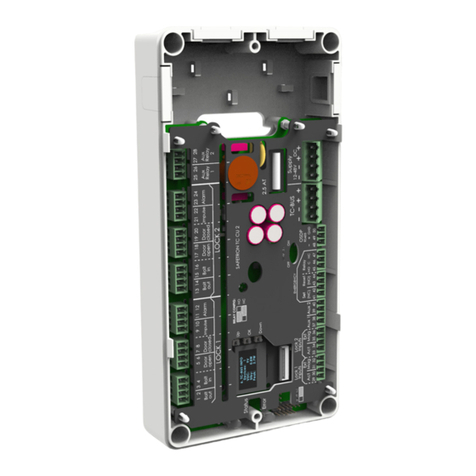
SAFE TRON
SAFE TRON CU2 instruction manual

Baumuller
Baumuller B MaXX 4000 Series Instruction handbook
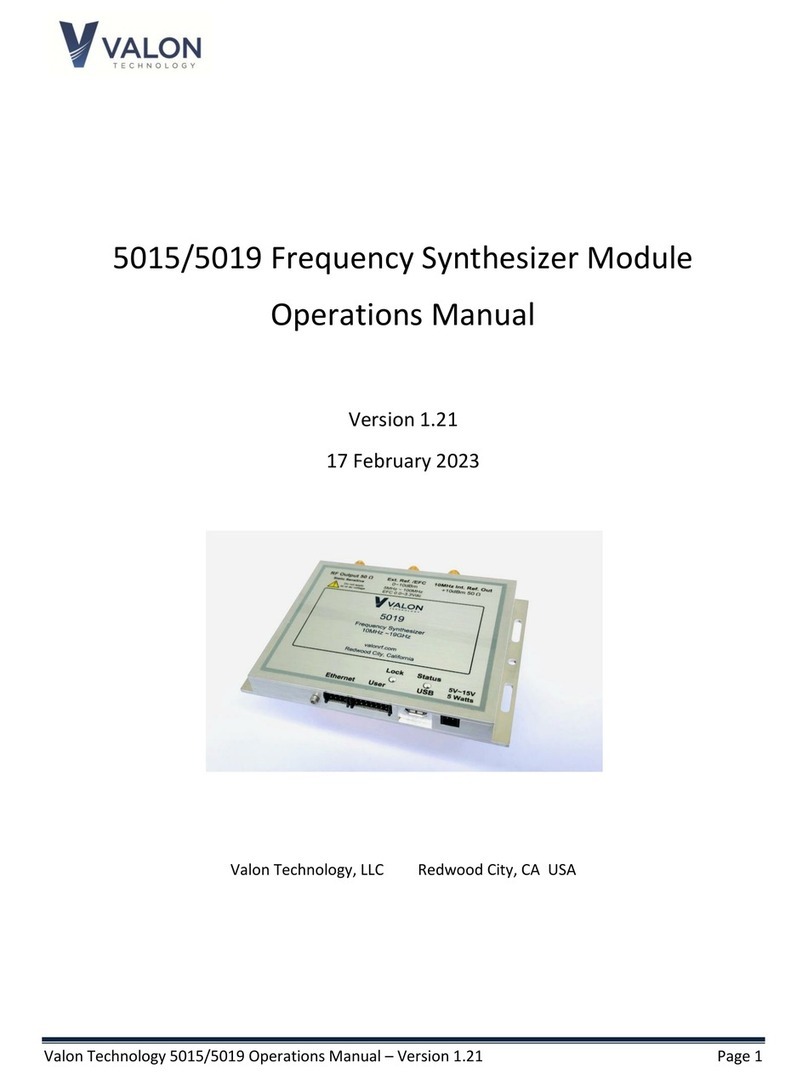
Valon
Valon 5015 Operation manual
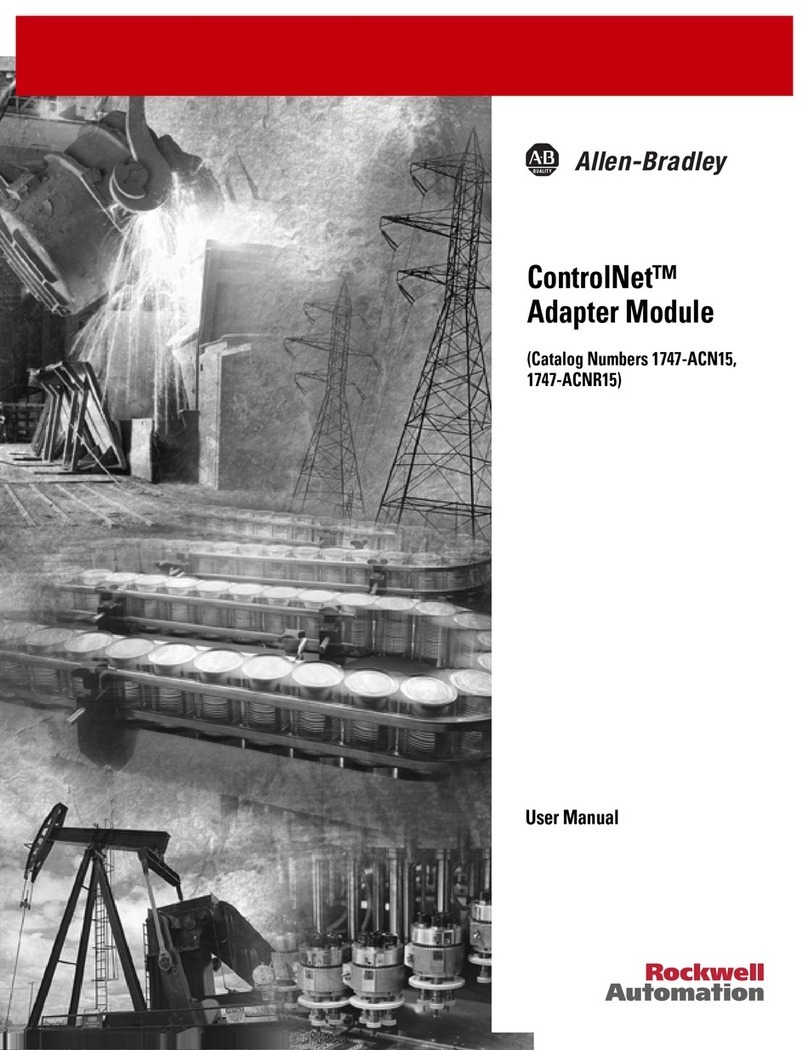
Allen-Bradley
Allen-Bradley ControlNet 1747-ACN15 user manual
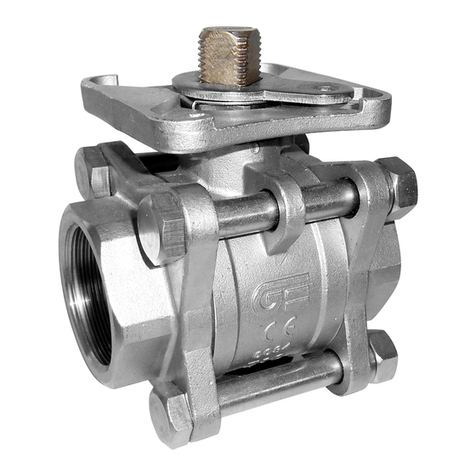
OMAL S.p.A
OMAL S.p.A 424 Series Maintenance and spare parts

HEIDENHAIN
HEIDENHAIN ND 1200 QUADRA-CHEK installation instructions

Edge Lighting
Edge Lighting Controller Dial with Power Supply Operational guide

Sony
Sony LLC-8000A Service manual
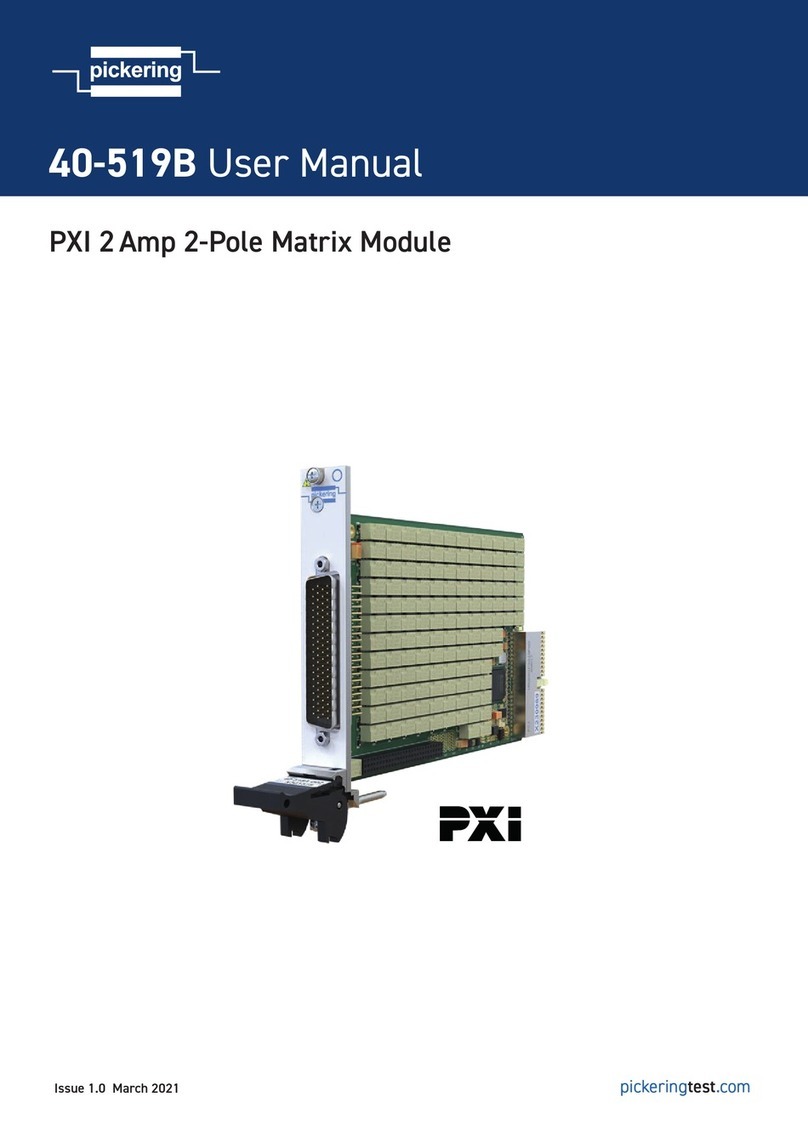
Pickering
Pickering 40-519B user manual
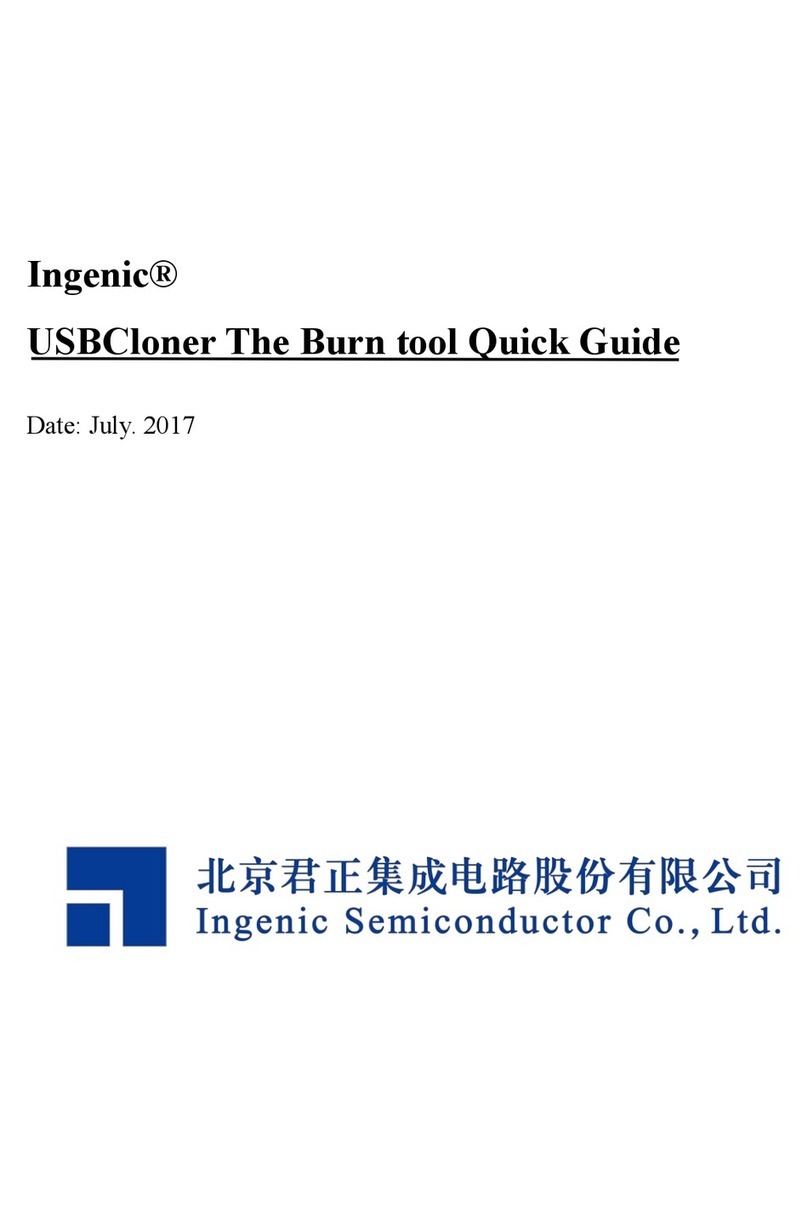
Ingenic
Ingenic USBCloner quick guide
